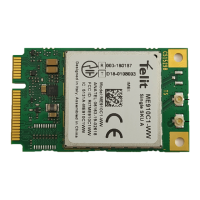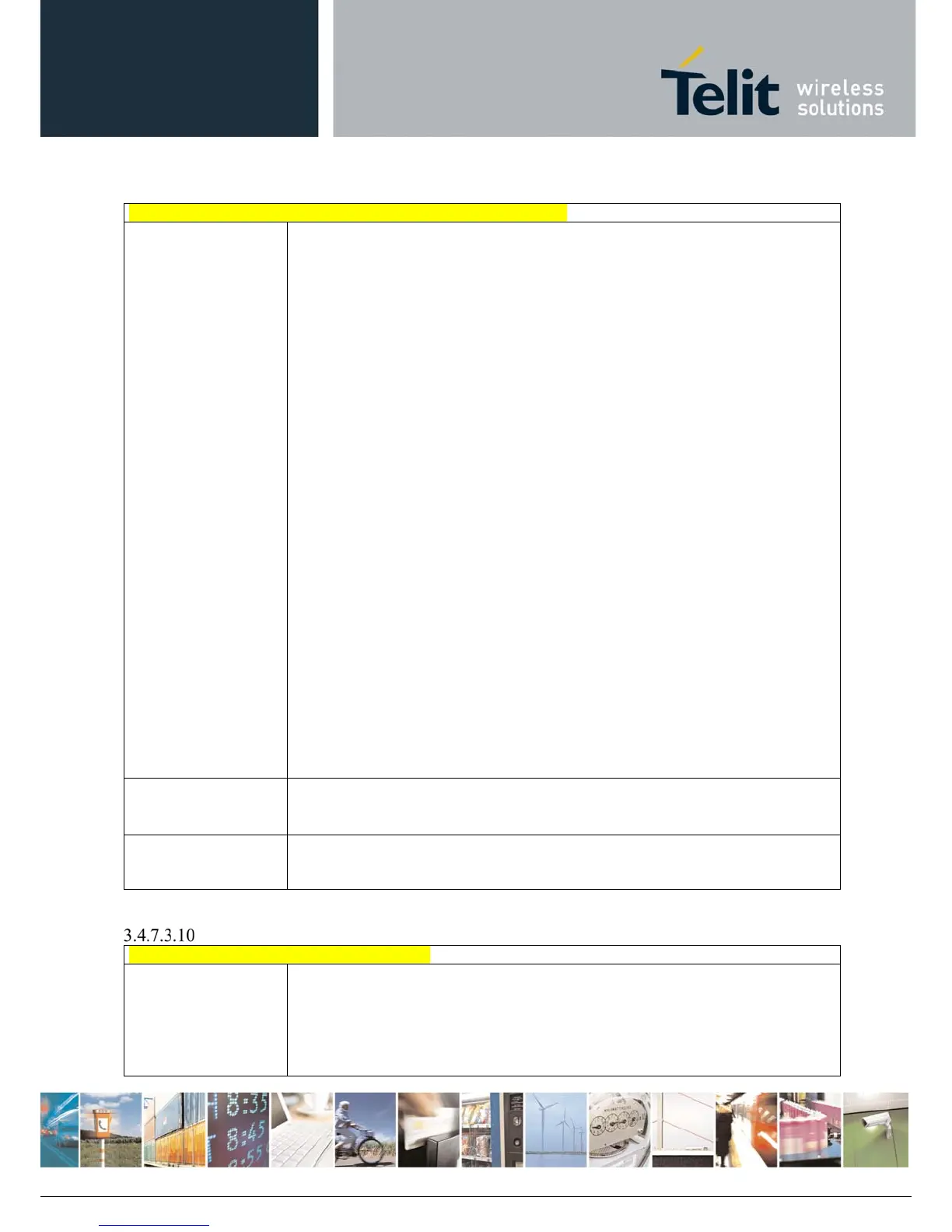AT Commands Reference Guide
80529ST10815A Rev.2– 2017-09-14
ReproductionforbiddenwithoutTelitCommunicationsS.p.A.writtenauthorization‐AllRightsReserved page180of233
#SSLSECCFG – Configure security parameters of a SSL socket
AT#SSLSECCFG=
<SSId>,<CipherSuite
>,<SecLevel>
This command allows configuring SSL connection parameters.
Parameters:
<SSId> - Secure Socket Identifier
1 - Until now SSL block manage only one socket
<CipherSuite>
0 - Chiper Suite is chosen by remote Server [default]
1 - TLS_RSA_WITH_RC4_128_MD5
2 - TLS_RSA_WITH_RC4_128_SHA
3 - TLS_RSA_WITH_AES_256_CBC_SHA
4 - TLS_RSA_WITH_NULL_SHA
<SecLevel>
0 - No authentication [default]
1 - Manage server authentication
2 - Manage server and client authentication if requested by the remote server
Note: if no authentication is set no security data are needed (Client certificate,
Server CAcertificate and Client private key).
Note: if only server authentication is managed then Server CAcertificate has to be
stored through AT#SSLSECDATA.
Note: if server and client authentication are managed then client certificate and
private key, and server CAcertificate have to be stored through
AT#SSLSECDATA. Please note that private keys with password are not
Supported.
Note: only “rsa_sign” certificates are supported by the Telit Module in client
authentication. The remote server must support this certificate type, otherwise the
handshake will fail.
Note: if secure socket is not enabled using #SSLEN only test requests can be made.
Read command can be issued if at least a <SSId> is enabled.
Note: these values are automatically saved in NVM.
AT#SSLSECCFG?
Read command reports the currently selected parameters in the format:
#SSLSECCFG: <SSId1>,<CipherSuite>,<SecLevel>
AT#SSLSECCFG=?
Test command returns the range of supported values for all the parameters.
#SSLSECCFG: (1),(0-2),(0-2)
Manage the security data
- #
SSLSECDATA
#SSLSECDATA - Manage the security data
AT#SSLSECDATA=
<SSId>,<Action>,<Da
taType>[,<Size>]
This command allows to store, delete and read security data (Certificate,
CAcertificate, private key) into NVM.
Parameters:
<SSId> - Secure Socket Identifier
1 - Until now SSL block manages only one socket.

